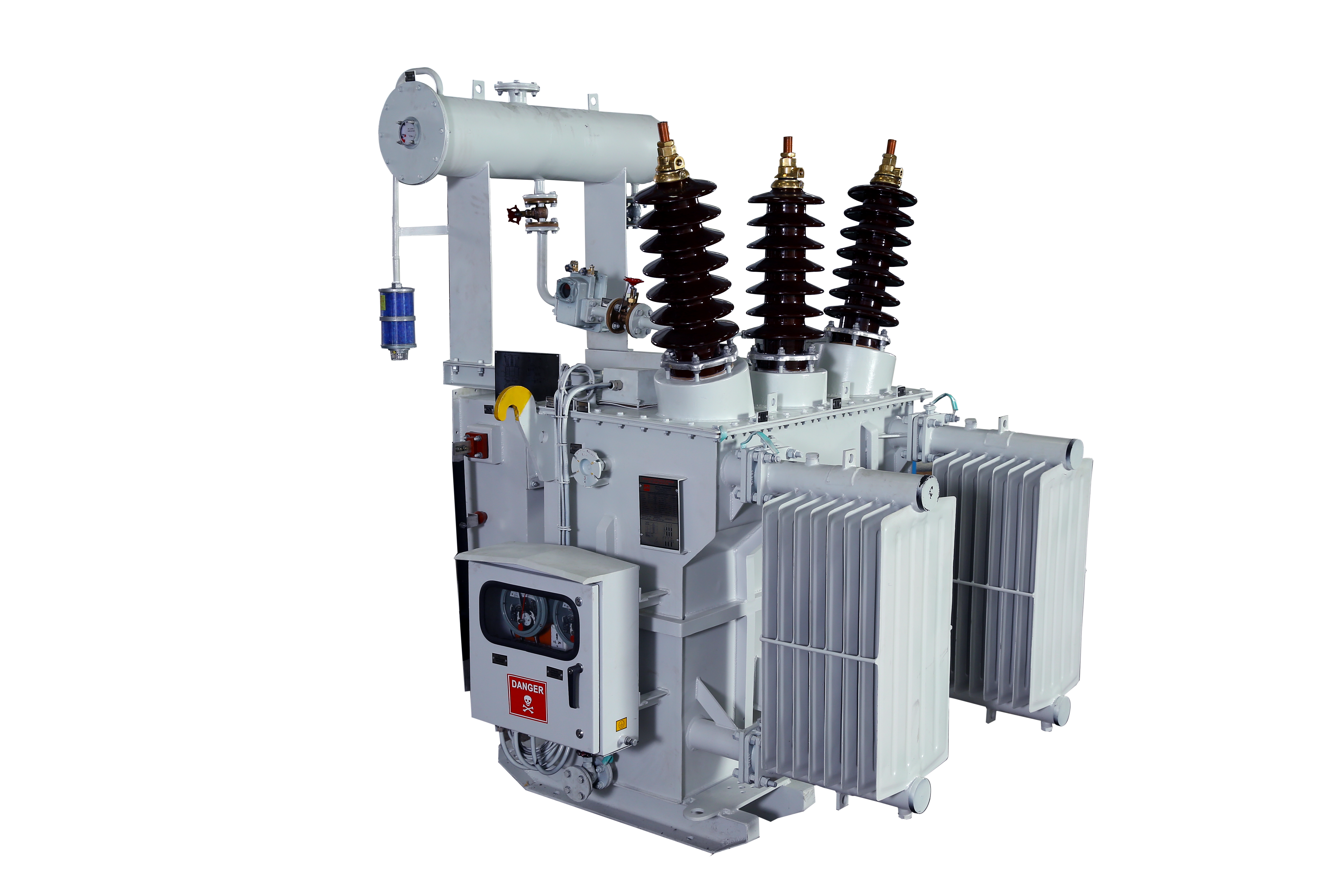Converting Liquid Cooled Spec to Dry-Type

The basic operation of liquid and dry-type transformers is the same, specifically the transformation of voltage. However, different dielectric medium can produce different specifications. Base dry-type specifications can be found on HPS website at www.hammondpowersolutions.com.
There are some limitations with dry-type transformers and generally are not considered a replacement for liquid filled transformers when:
- Voltage is above 44,000 VAC
- BIL is above 250 kV
- Size is above 40 MVA
- Pole mounted units
- Liquid filled transformers mounted in areas accessible to the general public
In addition to these specification points (see table below), there are some liquid filled transformer options that do not have dry-type equivalents. These should be removed from any dry-type specification and would include:
- Dead Front
- Bushing Wells
- Drain Plug
- Liquid Level Gauge
- Pressure Gage
- Valve
| Liquid Filled | Dry-Type | |
| No-Load Tap Changer | A rotary no-load tap changer is often used in liquid filled transformers to change tap voltages. |
Rotary tap changers are rarely used in dry-type designs. Coil face taps utilizing jumpers should be specified instead. |
| Enclosure | By their very nature, a liquid filled transformer is a sealed unit |
Dry-type power transformers will usually be ventilated Type 1 for indoor or Type 3R for outdoor. |
| Efficiency | U.S. DOE 2016 regulations have established minimum efficiency levels for liquid filled and dry-type transformers up to 2500 kVA. Canadian NRCan 2019 efficiency specifications go up to 10 MVA. |
Liquid filled efficiency levels will be slightly higher in the national specifications and should be updated to dry-type levels if converted. |
| Site Preparation | U.S. DOE 2016 regulations have established minimum efficiency levels for liquid filled and dry-type transformers up to 2500 kVA. Canadian NRCan 2019 efficiency specifications go up to 10 MVA. |
Liquid filled efficiency levels will be slightly higher in the national specifications and should be updated to dry-type levels if converted. |
| Termination | Liquid filled units have fewer locations for termination, especially if close coupling to switchgear is required. |
Dry-type units can be easily directly terminated to switchgear, cabling and other methods. |
| Temperature Rise | Liquid filled transformers have lower winding temperature rise restricted by the insulation and liquid thermal capabilities. Because of the thermal properties of the liquids and cooling fins, liquid filled transformers have lower operating temperatures. |
Dry-type transformer insulation has higher thermal capabilities and hence temperature rises are much higher with more variations to work in higher ambient temperatures. |
| Dead Front | Dead front is standard within the non-ventilated compartment of liquid filled transformers. |
Dry-type transformers can be ordered with the primary and/or secondary points wired to a non-ventilated air terminal chamber which in turn can have dead front construction added. |
| Sound Levels | Standards specify the maximum sound level of liquid filled transformers lower than same rating of a dry-type transformer. |
In general, dry-type transformers will be louder than the equivalent liquid filled unit. |
| Cooling Terms1 | |
| Liquid Filled | Dry-Type |
| ONAN: Liquid Natural Air Natural | ANN: Air Cooled Natural |
| ONAF: Liquid Natural Air Forced | AFN: Forced air inside & natural outside |
| OFAF: Liquid Forced Air Forced | AFF: Forced air inside & outside or (AFN) Water ancillary cooled |
| OFWF: Liquid Forced Water Forced |
1Cooling terms are not an exact cross and are provided for review. Applications need to be reviewed to verify that the cooling methods are suitable.
Dry-Type Temperature Rise Terms
Liquid filled and dry-type transformers use significantly different insulation systems. Liquid filled cool through a larger surface area and run cooler even when losses are similar. Dry-type transformers compensate for higher running temperatures by using advanced insulation systems such as NOMEX. Please consider using the following dry-type temperature rises.
| Rise | Max Ambient | Average 24 hour Ambient | Service Factor @ 30o Average Ambient |
| 150o | 40oC | 30oC | 1.00 |
| 115o | 75oC | 60oC | 1.15 |
| 80o | 110oC | 90oC | 1.30 |
Dry-type and liquid filled transformers both have unique advantages. Care must be taken in converting specifications and in many cases the specific technologies of the two designs may provide a significant advantage for one type of transformer.
HPS Millennium E vacuum pressure impregnated (VPI) and HPS EnduraCoil cast resin transformers can provide many advantages over liquid filled transformers. For more information, please contact Hammond Power Solutions.
